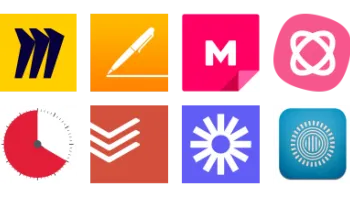Take a look inside 7 images
Nimbus Clipper
Pros: Users can clip a whole site or sections and save them directly to a Nimbus Note account. Multiple privacy and security safeguards make it a great fit for schools.
Cons: Some notes take a long time to load or don't load at all. Plus, it's not always a clean, exact clip from a website into a note.
Bottom Line: Curation-focused Chrome extension encourages users to work thoughtfully with web content before saving it to their notes.
A good use of Nimbus Clipper is to build lessons around curated web content. Since teachers can clip sections of pages, highlight text, and add to-do lists and reminders before saving clipped content, it's easier to make adjustments in the moment rather than save it for later review. Teachers can gather research and resources for unit planning, including images, links to videos, and relevant sections of articles or PDFs. Once they save their clipped items to their Nimbus Note account, teachers can add tables, notes, images, and more to develop resource-rich lessons within the platform.
Students can use the tool to clip content as well, for research assignments, projects, or just for fun. Plus, the to-do lists help kids keep track of assignments or steps to complete for any task. It's a great replacement for easy-to-lose index cards, and an easy way for teachers to see a student's source material as a research project develops. Just be aware that effectively using these types or organizational tools doesn't come naturally to all kids. Some will need support to help them transform saved content into neatly formatted notes and organize them into appropriate folders.
Nimbus Clipper is a web-clipping tool enabling users to curate content from whole or parts of websites or PDFs. After installing the Chrome extension, users click on the icon and are directed to clip fragments, full pages, articles, images, or bookmarks. Blue boxes around content guide users to collect the parts they want to save, and there are options to work with the content before saving it to the user's Nimbus Note account. For example, users can add a to-do list to a clip or highlight parts of text before saving it. Once users save the clip, they can work with it further in Nimbus Note.
Overall, Nimbus Clipper is easy to use, but there are some instances where the notes fail to save or do not transfer as they look on the original website. Although the tool isn't available as a mobile app, notes sync across devices, so users will have access to their clips from any web-connected device.
Students really have to learn to use two tools -- Nimbus Clipper and Nimbus Note -- in order for this extension to be an effective learning tool. Simply clipping content won't lead to much in the way of student learning, but using the tool's different features can. If kids get in the habit of highlighting texts and creating to-do lists before clipping, then the web clipper may prove particularly useful for keeping track of research or planning projects. Plus, the organizational features are great for those who need extra support in the way of reminders, tables, or task lists.
Teachers can assist students by helping them identify the most important information on a page. That way, students are getting key information without the additional text, images, or advertising that often appear in web-based content. Once they get the hang of it, most kids will appreciate the ease with which they can collect and annotate information in almost any format. So, while Nimbus Clipper's educational value is dependent upon the guidance a student gets for effective use, its myriad applications make it worth the time and effort.

















